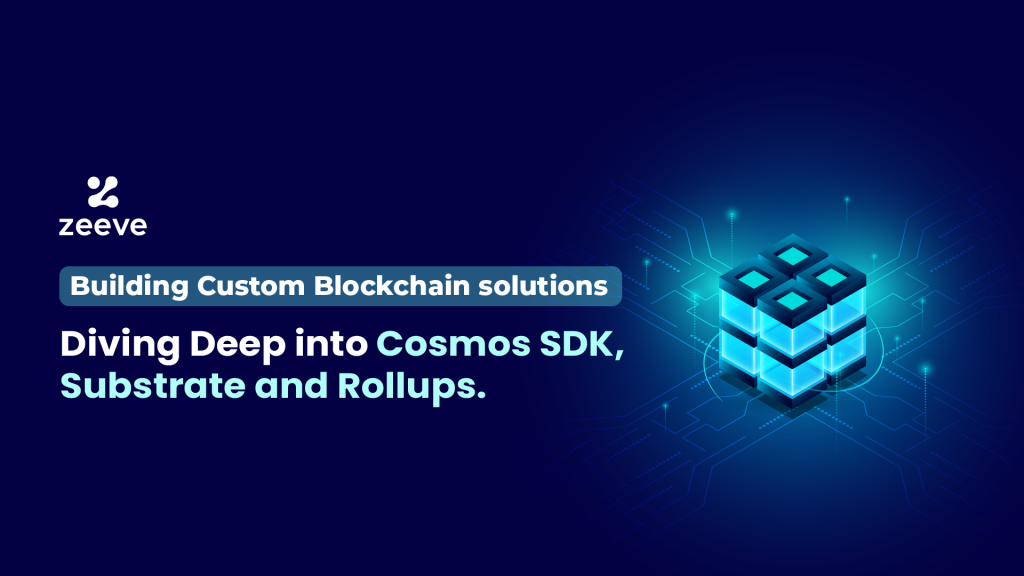Custom blockchain development has always been a leading trend across businesses. That’s because custom solutions allow for use-case-specific features and personalization. However, building a custom blockchain solution entirely from scratch can be complex, expensive, and time-consuming, especially for startups and scaleups. To provide a solution, blockchain development frameworks have emerged, enabling seamless development of tailored solutions like dApps and sovereign blockchain. This article will explore three highly viable options to build custom blockchains— Cosmos SDK, Substrate, and Rollups technology.
Why custom blockchain development is popular among enterprises?
Let’s first understand why custom blockchain development is becoming the preferred choice of web3 enterprises. Custom blockchain solutions are designed to meet the unique business needs. For example, if an enterprise is based on a supply chain, its requirements will differ from a finance-based project. The difference can exist in terms of speed of transaction execution, level of security, and cross-chain interoperability. Let’s learn its benefits:
Fit for specific use cases: Different web3 projects bring their own unique requirements that ready-made blockchain solutions may not fulfill. Hence, with custom-built solutions, businesses can tweak the features and functionalities of their solutions and make it highly use case-specific.
Scalability optimization: Scalability needs are different for every blockchain solution. Like, a web3 gaming project may demand higher throughput requirements than an enterprise blockchain solution. Similarly, an enterprise use case might be very high on security compared to a gaming dApp. Therefore, custom blockchain solutions offer the option to customize their scalability capabilities.
Cross-blockchain interoperability: Custom blockchain solutions built on standalone blockchains can be easily interoperable with other chains in the ecosystem. For example, if you build a single-use blockchain with Cosmos SDK or Substrate, your dApp deployed on it will be able to interoperate with all the other blockchains built using these frameworks.
Governance and control: Building a custom blockchain solution grants you full control over the network’s governance rules, which enables seamless integration of new upgrades and ecosystem rules. That means, you can customize your project’s consensus mechanism, tokenomics, and other crucial aspects.
How to build custom blockchain solution: viable ways
Based on your dApp’s requirements, you can use general-purpose blockchains or build an appchain to solely manage a single use case, for example, a DeFi dApp or supply chain solution. However, if you don’t want to launch appchains but still want to improve scalability, launching Layer2 Rollups are a prominent way to do it. Let’s understand the ins and outs of both methods:
Option:1- Building custom blockchain with top frameworks– Cosmos SDK and Substrate
- Cosmos SDK
Cosmos SDK, is an open-source framework for building custom, application-specific chains. Web3 projects and enterprises can use Cosmos SDK to build PoS (proof-of-stake) blockchain like Cosmos Hub as well as permissioned PoA (proof of authority) blockchains on the top of IBC Tendermint via ABCI protocol. Cosmos SDK, offers for all the resources, tools, and community support to streamline sovereign, secure, and flexible custom blockchains development powering a single blockchain solution or dApp.
Cosmos SDK is based on built-in plugins that connect its appchain ecosystem to interact with the Tendermint protocol and core concepts. Based on your network requirements, you can implement specific concepts in your blockchain, tweaking the ecosystem, the consensus engine, or even the pallets.
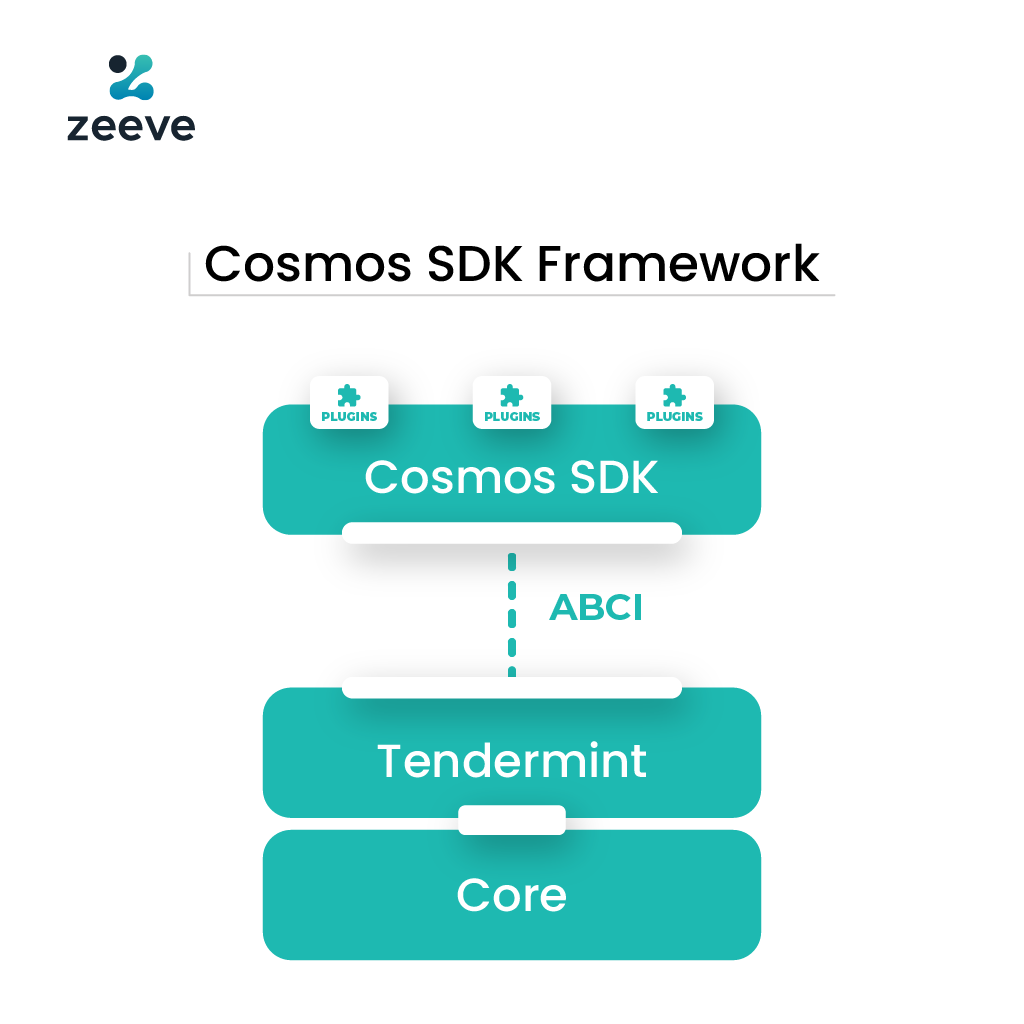
Building custom blockchains is easy with Cosmos SDK because it offers a collection of tech stack, already-built and customizable modules complete with packages, tooling, plug-n-play consensus layer, and end-to-end documentation. Cosmos SDK comes with a core that offers all the basic functionalities a blockchain may need, for example, boilerplate implementation for ABCI, a multistore to persist the state, and a server to support a full node.
On top of the Cosmos SDK’s core, you can build modules that define unique application logic of your blockchain. Cosmos SDK provides you with production-grade modules, IBC modules, and CosmWasm modules, allowing you to choose what matches your project beads. You have the flexibility to customize existing modules or build new modules from scratch to implement unique application logic.
In absence of all these stacks, creating your own AppChains will become a complex task that will cost you more, need more resources, and increase time-to-market. Hence, the end goal of Cosmos SDK is to simplify the development of complex blockchain applications.
Other than easing the AppChain development, Cosmos SDK provides benefits like enhancing the transaction throughput capacity of your application, making it interoperable with all the other parallel chains running in the Cosmos ecosystem.
If you want to read more details about why Cosmos SDK can be a good fit for custom blockchain development. Check our dedicated guide below:
Why Cosmos SDK is a powerful framework for building custom blockchains
2. Substrate:
Substrate is a multi-chain framework or SDK (software development kit) for building custom-fitted blockchains that can run as independent networks parallel to the other chains while retaining interoperability. With Substrate, enterprises have the complete freedom and flexibility to customize the infrastructure components to deploy their blockchain-powered solutions. Blockchains built using Substrate are fully upgradeable, adaptable, and composable. That means your project can evolve to include new features or upgrade existing ones.
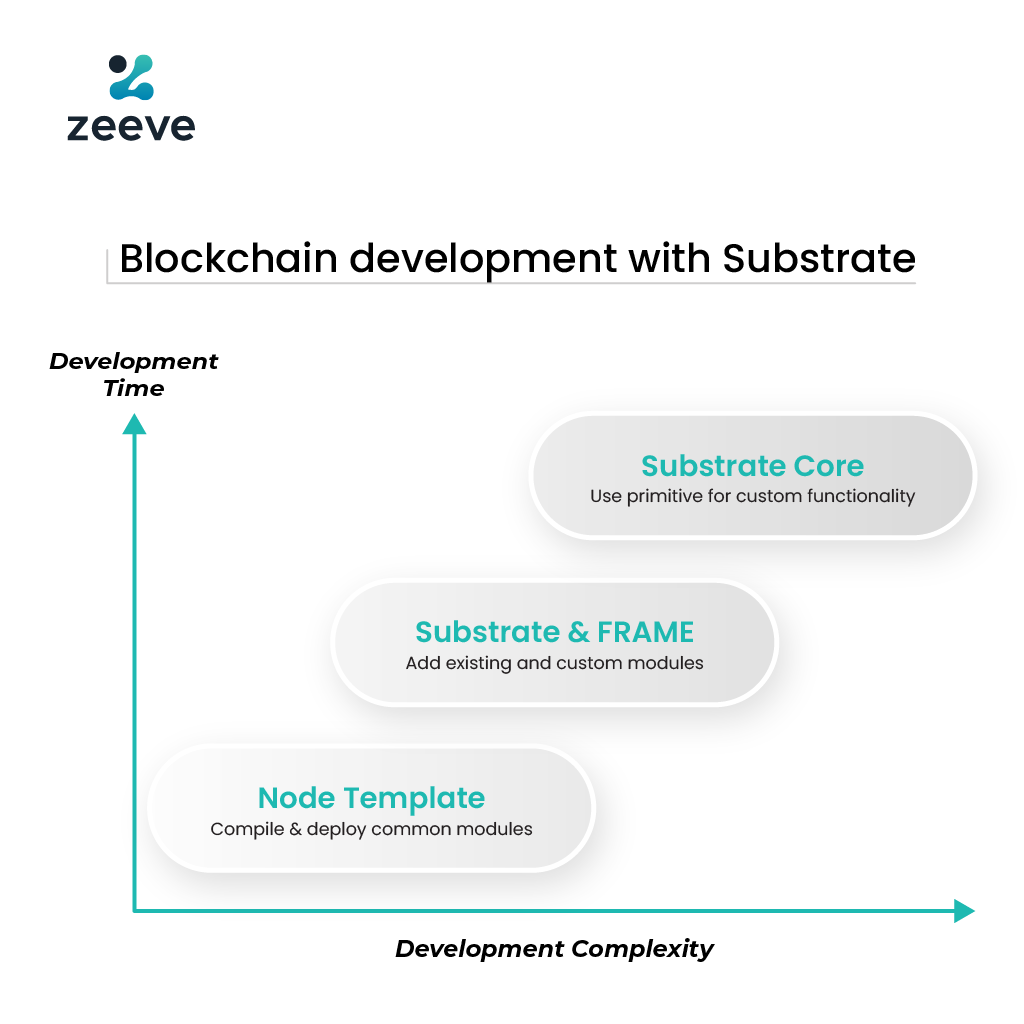
Substrate core, Substrate FRAME, and Node templates are the low-level primitives that Substrate offers to web3 projects, enabling them to build custom applications based on their novel ideas instead of relying on the existing application logic. Let’s understand what are the options available on Substrate to build custom, application-specific blockchains.
Using templates and modules
Substrate allows blockchain projects to work with FRAME development environments that offer ready-to-use templates and pre-built modules called ‘Pallets’. Web3 projects can use these templates to build purpose-built blockchains without complexity and increased development time. Hence, the objective of FRAME is to offer modular and flexible components that are utilized to create custom runtime logics for Substrate-based blockchains. FRAME further enables you to configure the specific modules– Pallets that allow the creation of customizable application logics for use cases like managing transaction balances and voting for governance. Also, Pallets offers business logic that supports high-level blockchain operations such as consensus and validator’s staking.
Using custom pallets
Substrate’s FRAME development environment offers a set of advanced libraries that allow for seamless development of your own custom pallets. Having the freedom to customize the pallets means you can define the unique runtime behavior for your application. Note that each pallet on Substrate includes its own discrete logic; therefore, you should combine the existing open-source pallets with your custom pallets, adding specific features and functionalities to your application. For example, you can use the pre-built pallet– ‘Balances’ in your application’s run time to use the specific functionality and ‘storage item’ to manage the account balances. Further, you can build a custom pallet that sends notifications whenever there’s fluctuation in the account balance. This way, a Substrate-based AppChain can achieve a competitive edge.
Learn about the enterprise-grade use cases of the Substrate framework to understand its development scope. Check our detailed guide on this:
What can enterprises build with Substrate frameworks?
Option:2- Launching L2/L3 Rollups chains
Rollups are an excellent, new-age Layer-2 scaling solution designed to enhance the transaction throughput and response time while maintaining security and full decentralization. Rollups, in a way, are similar to appchains because both have the same main goal of enhancing scalability.
The key difference is that Rollups are launched and operated on the top of Layer-1 and that’s why it leverages benefits like data availability, transaction settlement, computation, and censorship resistance from the underlying chain. Whereas, appChains may or may not have reliance on any main chain. But, having a connection with the base chain offers excellent security benefits. Coming again to the Rollups, these are viable solutions for projects that want to improve the scalability of their dApps by taking transaction load off-chain. Meanwhile, they get robust security from the layer-1 blockchain. Also, cost can be a factor here. Building a standalone blockchain is although a lot beneficial, not every project can afford it unless they are in dire need of modularity, and interoperability element that are main USPs of appchains.
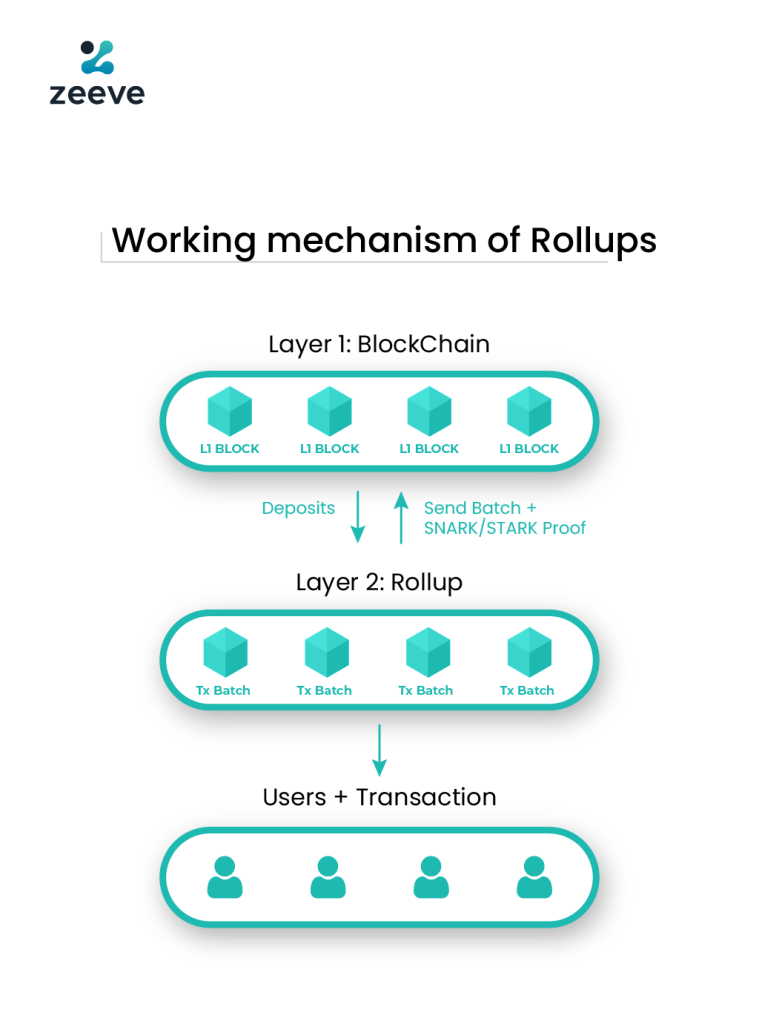
Note that Rollups can be launched as layer2 or layer3 networks. L2 mainly focuses on improving scalability while L3 is for additional features like adding interoperability.. Currently, two types of Rollups are relevant in the web3 space: Optimistic and Zk-rollups.
Optimistic rollups use its ‘optimistic’ approach to assume that all the transactions executed on the Layer-2 chain are valid unless some honest validator submits proof against faulty transactions. If the proof is valid, the faulty transactions will be re-executed, and the rollup’s state will be updated. However, the possibilities of dispute are almost null on Optimistic Rollups. Popular optimistic rollup frameworks are OP Stack and Arbitrum orbit.
Speaking about the Zk-rollups, they use zero-knowledge-based ‘validity proofs’ to determine that all the transactions are valid and can be shifted on-chain. This Zk-proof is a cryptographic concept that uses sophisticated algorithms to prove that all the transactions are true and valid mathematically. Since transactions are validated beforehand, the idea of a dispute period is not applicable for Zk-rollups. Popular ZKrollups stack are Polygon CDK and ZK Stack hyperchain.
Cosmos, Substrate, and Rollups– A brief Comparison
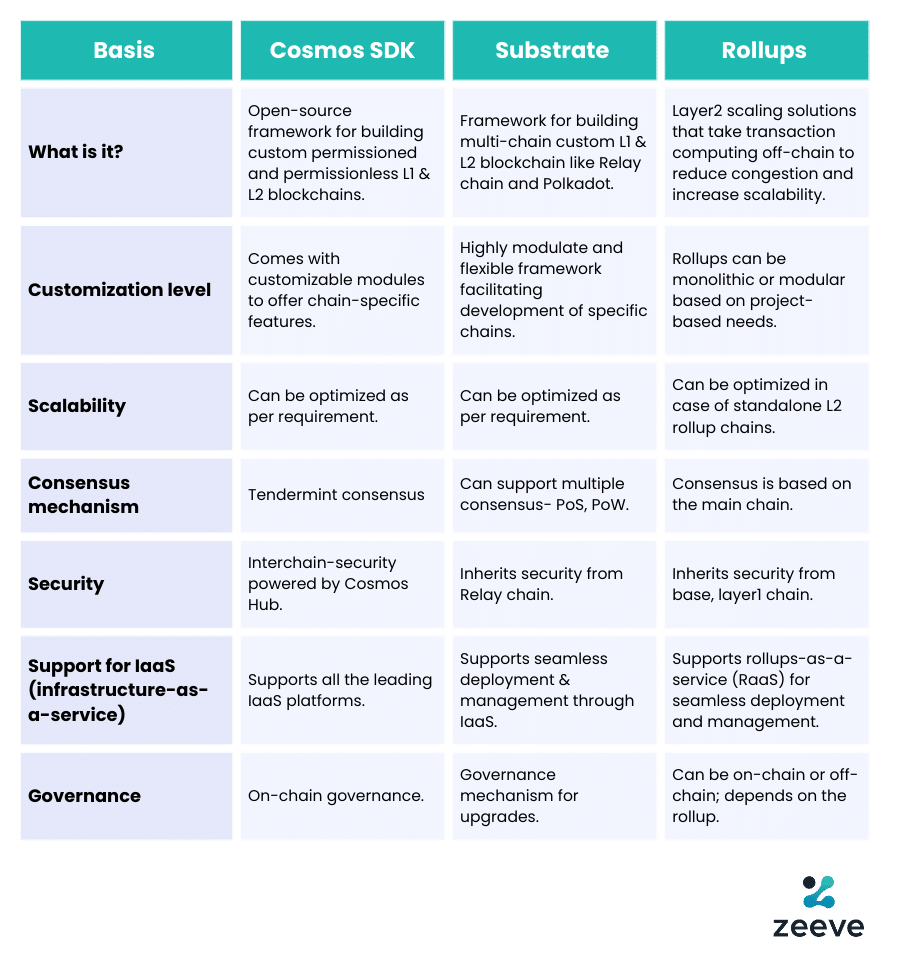
Build your custom blockchain easily with the Zeeve BaaS platform:
Zeeve offers enterprise-grade infrastructure for appchains building with frameworks like Cosmos SDK and Substrate in addition to its Rollup-as-a-service(RaaS) stack. We understand that launching application-specific blockchain and rollup chains is complex. For example, you need to deploy and manage multiple nodes, integrate wallets, explorers, and launch testnet faucets. Also, you might need to set up a data indexing protocol to query the required blockchain data and set up cross-chain bridges. And, if you want modularity, it will require you to integrate an additional DA layer, decentralized sequencer, MPC wallets, account abstraction, and more.
With Zeeve RaaS and appchains, you get access to scalable nodes, white-labeled explorers, faucets, and data indexing solutions. Additionally, Zeeve has added support for 40+ third-party integration services like Celestia, Redstone, Benqi, Biconomy, and more. You can simply plug-n-play the services you want.
If you plan to launch AppChain or want to scale your existing solution with rollups, connect with Zeeve’s blockchain experts to launch a custom blockchain specific to your requirements.



















